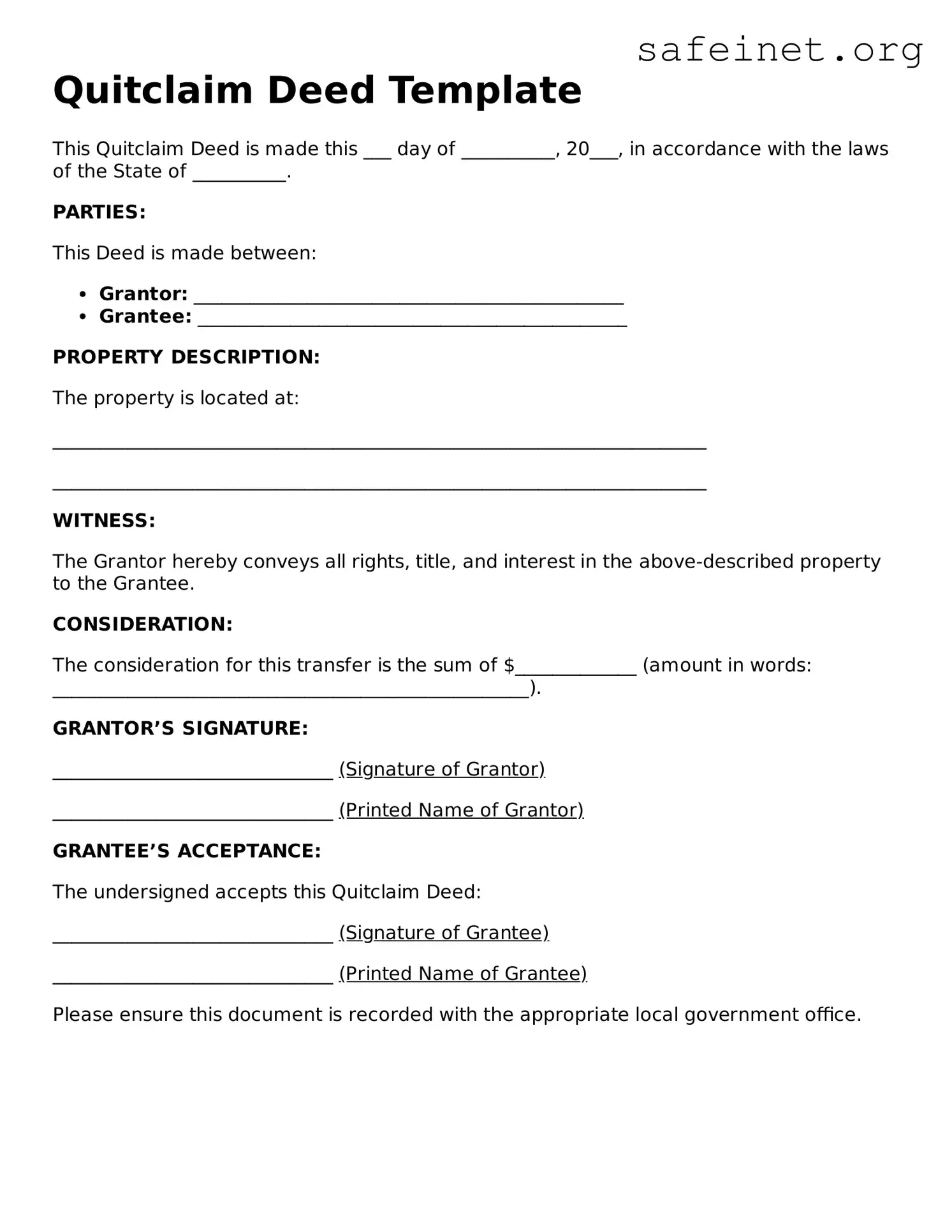A Warranty Deed provides a stronger guarantee compared to a Quitclaim Deed. While a Quitclaim Deed transfers whatever interest the grantor has in a property without any warranties, a Warranty Deed assures the buyer that the seller has a legitimate ownership interest and guarantees that the title is clear of any claims. This legal protection makes Warranty Deeds a popular choice in most property transactions.
A Bargain and Sale Deed is somewhat similar to a Quitclaim Deed but includes limited warranties. It conveys ownership to the buyer, and like a Quitclaim Deed, it does not guarantee the absence of encumbrances. However, the seller implicitly warrants they have not sold the property to anyone else and that they have the right to transfer the property, providing a little more assurance to the buyer.
In contrast, a Grant Deed offers greater protection compared to a Quitclaim Deed. It implies that the grantor has not previously conveyed the same property to someone else and that the property is free of undisclosed encumbrances. While a Quitclaim Deed makes no such representations, a Grant Deed assures buyers of certain rights, making it a more secure option in real estate transactions.
A Deed of Trust serves a different purpose but is also related to property ownership. It acts as a security instrument in lending, transferring title to a trustee until a loan is repaid. Unlike a Quitclaim Deed, which simply transfers ownership, a Deed of Trust ensures that the lender has a claim to the property should the borrower default on their loan.
A Life Estate Deed allows an individual to transfer ownership of a property while retaining the right to live there for the rest of their life. This form is similar to a Quitclaim Deed in that it transfers property rights, but it also specifies that the grantor maintains certain rights to the property, creating a unique situation of partial ownership.
A Transfer on Death Deed (TOD) allows for the automatic transfer of property upon the death of the owner. While similar to a Quitclaim Deed in that it determines the future transfer of ownership, it offers the added benefit of avoiding probate. The deed is revocable during the owner’s lifetime, providing flexibility that a traditional Quitclaim Deed does not.
A Foreclosure Deed, issued when a property is sold to satisfy a debt, shares some characteristics with a Quitclaim Deed, as both transfer property ownership. However, a Foreclosure Deed operates under legal proceedings and typically involves the transfer of rights without warranties, similar to the way a Quitclaim Deed functions in informal transactions.
An Affidavit of Title, while not a deed, is closely related in real estate transactions. This document affirms that the seller owns the property and lists any exceptions or encumbrances. Unlike the Quitclaim Deed, which makes no representations, an Affidavit of Title provides an element of assurance about the state of the property’s title, giving the buyer valuable insight before making a purchase.
A Mineral Rights Deed transfers ownership specifically of subsurface resources like oil, gas, or other minerals. Similar to a Quitclaim Deed, it may transfer whatever rights the grantor has without warranty. It directly pertains to property ownership but focuses on the extraction and usage of natural resources beneath the ground.
Last but not least, a Rescission Deed is used to cancel a previously executed deed. This document is similar as it relates to the transfer of property rights, yet its primary focus is on reversing ownership transfer rather than establishing or conveying a new ownership interest like a Quitclaim Deed does.
